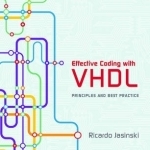Effective Coding with VHDL: Principles and Best Practice
BookThis item doesn’t have any media yet
2016 | Computing & IT
This book addresses an often-neglected aspect of the creation of VHDL designs. A VHDL description is also source code, and VHDL designers can use the best practices of software development to write high-quality code and to organize it in a design. This book presents this unique set of skills, teaching VHDL designers of all experience levels how to apply the best design principles and coding practices from the software world to the world of hardware. The concepts introduced here will help readers write code that is easier to understand and more likely to be correct, with improved readability, maintainability, and overall quality. After a brief review of VHDL, the book presents fundamental design principles for writing code, discussing such topics as design, quality, architecture, modularity, abstraction, and hierarchy. Building on these concepts, the book then introduces and provides recommendations for each basic element of VHDL code, including statements, design units, types, data objects, and subprograms. The book covers naming data objects and functions, commenting the source code, and visually presenting the code on the screen.
All recommendations are supported by detailed rationales. Finally, the book explores two uses of VHDL: synthesis and testbenches. It examines the key characteristics of code intended for synthesis (distinguishing it from code meant for simulation) and then demonstrates the design and implementation of testbenches with a series of examples that verify different kinds of models, including combinational, sequential, and FSM code. Examples from the book are also available on a companion website, enabling the reader to experiment with the complete source code.
Related Items:
| Published by | MIT Press Ltd |
| Edition | Unknown |
| ISBN | 9780262034227 |
| Language | N/A |
Images And Data Courtesy Of: MIT Press Ltd.
This content (including text, images, videos and other media) is published and used in accordance
with Fair Use.
